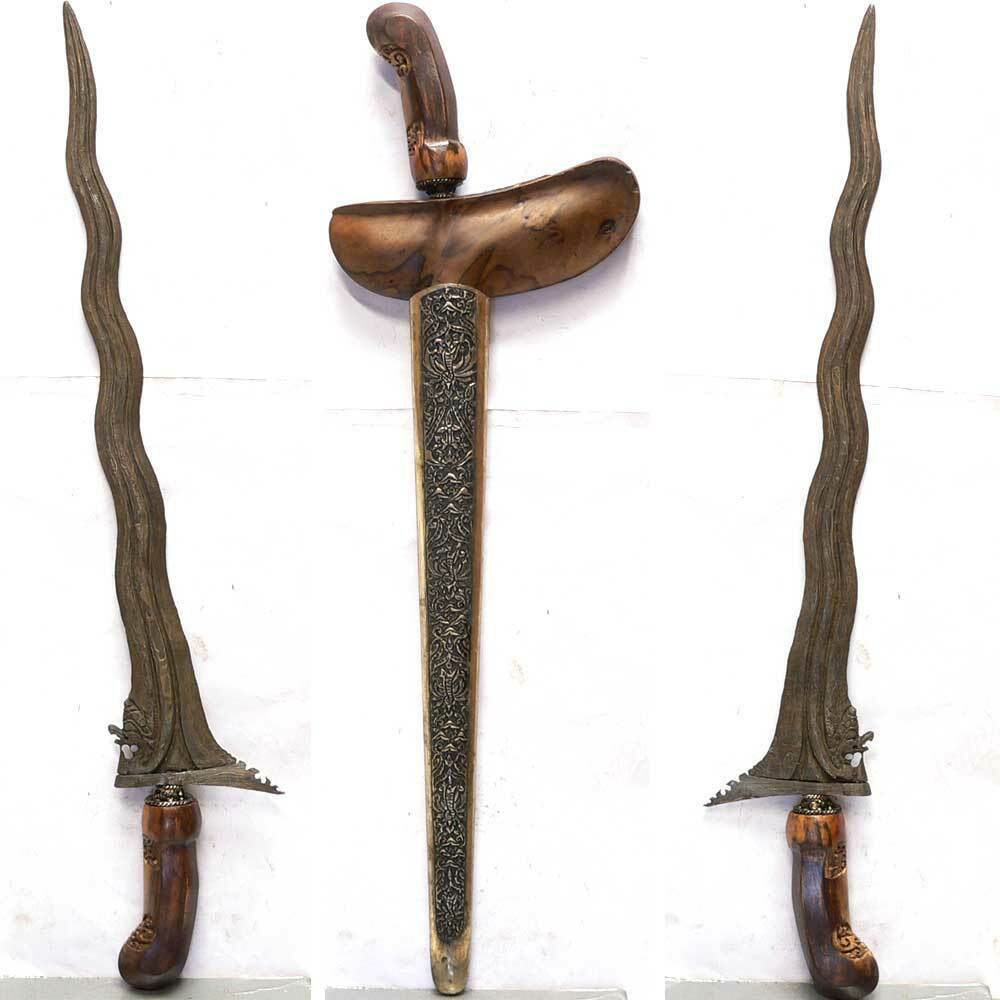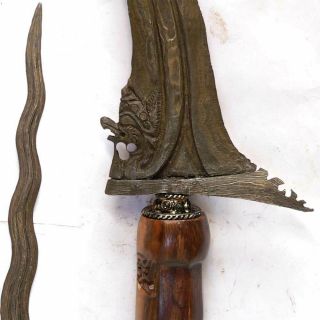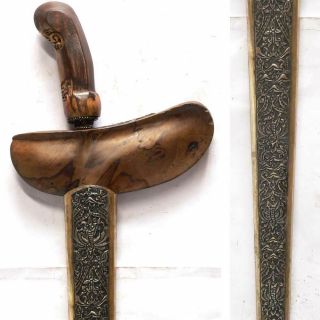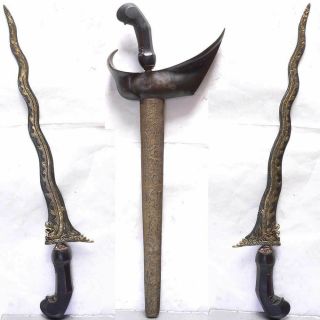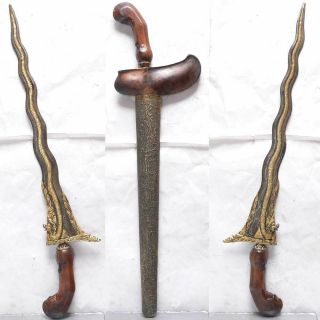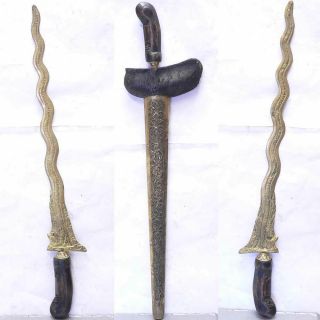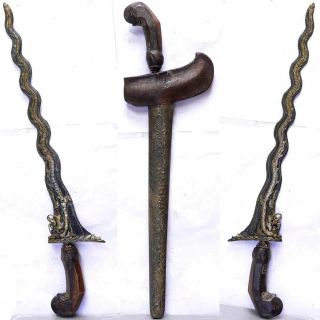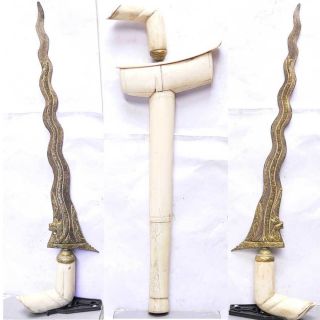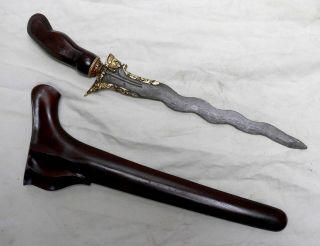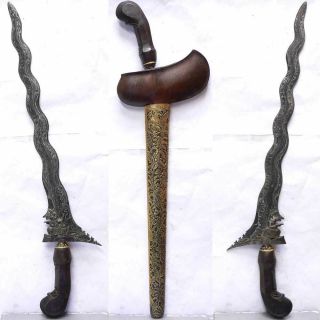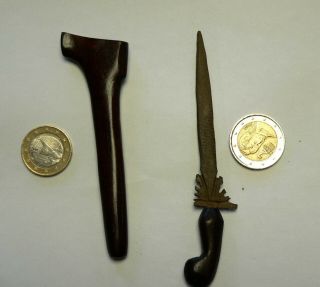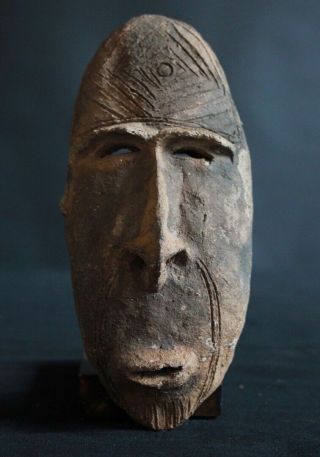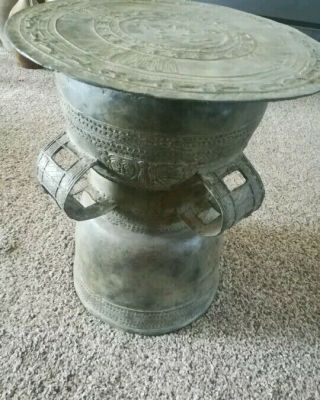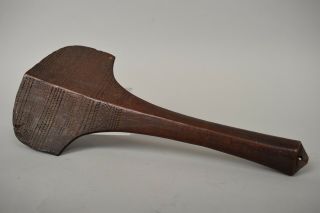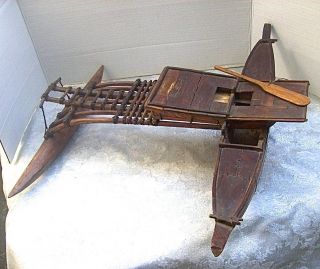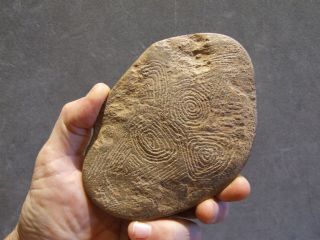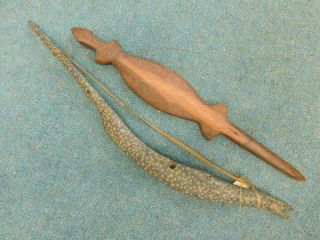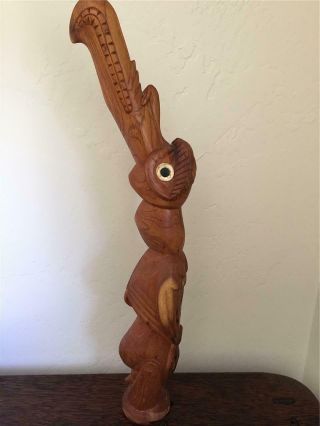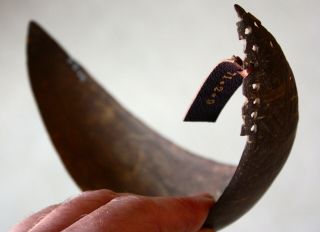9 Lok DRAGON KRIS Keris NAGA Blade Magic Sword Java Indonesia Tribal Art
Item History & Price
| Reference Number: Avaluer:15881016 | Original/Reproduction: Original |
| Country of Origin: Indonesia | Category: Antiques Ethnographic |
| Asian Culture: Indonesia |
Indonesian keris (kris) .
I'm selling a collection of old Indonesia goods, mainly weapons and statues. This one was labelled "9 lok Naga kris uit Djogjakarta"
I found on the internet about naga: In Javanese and Balinese culture, Indonesia, a Naga is depicted as a crowned giant magical serpent, sometimes winged. It is similarly derived from the Shiva-Hinduism tradition, merged with Java...nese animism. Naga in Indonesia mainly derived and influenced by Indic tradition of Naga serpent, combined with native animism tradition of sacred serpent.The early depiction circa 9th century Central Java closely resembled Indic Naga which was based on cobra imagery. The later depiction since the 15th century however, was slightly influenced by Chinese dragon imagery, although unlike its Chinese counterparts, Javanese and Balinese nagas do not have legs. The concept of Naga is prevalent in the Hindu period of Indonesia, before the introduction of Islam. It is usually linked as the lesser deity of earth and water. In a wayang theater story a snake (naga) god named Sanghyang Anantaboga or Antaboga is a guardian deity in the bowels of the earth.[29][30] Naga symbolize the nether realm of earth or underworld.One of the specificity of the Keris is its connection with the serpent deity Naga. A Chinese monk, I- Ching, who lived in Java during the late 7th century noticed the local Buddhism possessed a unique characteristic: praying Naga deities. According to the tradition, the straight Keris represents a still serpent, whereas the wavy represent a moving serpent. The Naga is often represented on Keris blades.......The great nemesis of the nagas in the Mahabharata is the gigantic eagle-king Garuda. Garuda and the nagas began life as cousins. The sage Kashyapa had two wives (amongst his 13 wives, all prajapati Daksha's daughters), Kadru and Vinata, the former of whom desired many offspring, and the latter of whom desired few but powerful offspring. Each got her wish. Kadru laid 1000 eggs which hatched into snakes, and Vinata laid two, which hatched into the charioteer of Surya the sun god and Garuda. Through a foolish bet, Vinata became enslaved to her sister, and as a result Vinata's son Garuda was required to do the bidding of the snakes. Though compliant, he chafed and built up a grudge that he would never relinquish. When he asked the snakes what he would have to do in order to release his mother, Vinata, from her bondage, they told him he would have to bring them amrita, the elixir of immortality. Garuda stole the elixir from the gods and brought it to the serpents in fulfillment of their requirement, but through a ruse prevented them from partaking of it and achieving immortality. From that point onward, he regarded them as enemies and as food. (Book I: Adi Parva, Sections 16ff.)[citation needed]
I found on the internet about 9 lok:
Keris Lurus (straight Keris) and Keris Luk (curved keris) Dapur
Dapur or shape is the keris specific form or type and identified by particular combination of parts and curved (luk). The meaning of dapur is based on certain standard which is called Pakem Dapur Keris…B.Keris Luk or Keris with Curved Luk 3 : symbolizing a success to achieve some wishes.
Luk 5 : to be loved by other people
Luk 7 : dignity.
Luk 9 : dignity, charismatic and leadership.
Luk 11 : to achieve high position
Luk 13 : peaceful and stability of live.
I found on the internet about Djogjakarta: Yogyakarta (/ˌdʒɒɡjəˈkɑːrtə, ˌjɒɡ-/;[2] also Jogja or Jogjakarta; Javanese: ꦔꦪꦺꦴꦒꦾꦏꦂꦠ; formerly Dutch: Djokjakarta/Djocjakarta or Djokja) is a city on the island of Java in Indonesia. It is renowned as a centre of education (Kota Pelajar), classical Javanese fine art and culture such as batik, ballet, drama, music, poetry and puppet shows. Yogyakarta is the capital of the Yogyakarta Special Region and was the Indonesian capital during the Indonesian National Revolution from 1945 to 1949, with Gedung Agung as the president's office. One of the districts in Yogyakarta, Kotagede, was the capital of the Mataram Sultanate between 1575 and 1640......HistoryMataram Kingdom (8th – 10th century CE)According to Canggal inscription dated 732, the area traditionally known as "Mataram" became the capital of the Medang Kingdom, identified as Mdang i Bhumi Mataram established by King Sanjaya. The inscription was found (placed in a Hindu temple) in Central Java area, 40 km away from Yogyakarta and 20 km away from Borobudur temple's area. The temple itself was the border between the Hindu dynasty's area and the Buddhist's area (Syailendra dynasty). Mataram became the center of a refined and sophisticated Javanese Hindu-Buddhist culture, for about three centuries its heartland in Kedu Plain (southern slope of Mount Merapi) around Prambanan witnessed the construction of numerous candi including Borobudur and Prambanan. Around the year 929, the centre of the kingdom was shifted to East Java by Mpu Sindok, who established the Isyana Dynasty. The exact cause of the move is still uncertain; however, a severe eruption of Mount Merapi volcano or a power struggle probably caused the move. Historians suggest that, some time during the reign of King Wawa of Mataram (924–929), Merapi volcano erupted and devastated the kingdom's capital in Mataram. Majapahit Empire (1293–1527)During the Majapahit era, the area surrounding modern Yogyakarta was identified again as "Mataram" and recognized as one of the twelve Majapahit provinces in Java ruled by a Duke titled 'Bhre Mataram'. During the reign of Hayam Wuruk (1350 to 1389), the title of Bhre Mataram was held by king's nephew and son in-law Wikramawardhana
….Kotagede (now a district of Yogyakarta) was established as the capital of the Mataram Sultanate. During the reign of Sultan Agung Hanyokrokusumo (1613-1645), the Sultanate Mataram reached its zenith as the greatest kingdom in Java, and expanded its influence to Central Java, East Java and half of West Java. After two changes of capital, (Palace of Pleret and Place of Kerta, both located in Bantul Regency), the capital of Mataram Sultanate moved to Kartasura. Aftermath of the Gianti Treaty (1745–1945
During the reign of Pakubuwono II, a civil war broke out in Mataram Sultanate. The civil war was fought between Prince Mangkubumi and his elder brother, Sunan Pakubuwono II. It started when Sunan Pakubuwono II agreed to cooperate with the VOC, ceded some Mataram territory to the Dutch, and submitted to the foreign power. His younger brother, Prince Mangkubumi stood against the agreement due to concerns that his people would become slaves under Dutch rule. Prince Mangkubumi defeated the Pakubuwono forces and declared sovereignty in the Kingdom of Yogyakarta occupying the southern parts of the former Mataram Sultanate. The Yogyakarta Sultanate was established as a result of the Treaty of Giyanti (Perjanjian Gianti) by Prince Mangkubumi, who later ascended the throne as Sultan Hamengkubuwono I. Officially, the creation of Yogyakarta Sultanate is dated at 7 October 1756 as a result of civil war among the princes of The Mataram Sultanate. This civil war marked the end of the Mataram Sultanate and resulted in the birth of the Yogyakarta Sultanate and the Surakarta Sunanate. During the British occupation of Java, rumors of plans by the Javanese court to stage a rebellion caused uneasiness among the colonial authorities. On 20 June 1812, Stamford Raffles led a 1, 200-strong British force to attack the royal city. The Javanese were surprised by the attack and were easily subdued. In one day the city of Yogyakarta fell, with the city destroyed and its palace looted. The event completely stripped the sultanate of its remaining power and influence.[6] The sack also left the court humiliated and fueled a rebellion which would be known as Java War. Republic of Indonesia era (1945–present)In 1942 the Japanese Empire invaded Dutch East Indies and ruled Java until they were defeated in 1945. Sukarno proclaimed the independence of the Indonesian Republic on August 1945. Sultan Hamengkubuwono IX promptly sent a letter to Sukarno, expressing his support for the newly born nation of Indonesia and acknowledging the Yogyakarta Sultanate as part of the Indonesian Republic. The Sultanate of Surakarta did the same, and both of the Javanese kingdoms were awarded special status as "Special Regions" within the Indonesian Republic. However, because of a leftist anti-royalist uprising in Surakarta, the Sunanate of Surakarta lost its special administrative status in 1946 and was absorbed into Central Java Province. Yogyakarta's support was essential in the Indonesian struggle for independence during the Indonesian National Revolution (1945-1949). The city of Yogyakarta became the capital of the Indonesian Republic from 1946 to 1948, after the fall of Jakarta to the Dutch. Later the Dutch also invaded Yogyakarta, causing the Republic's capital to be transferred once again, to Bukittinggi in West Sumatra on 19 December 1948. Because of its significant contribution to the survival of the Indonesian Republic, Yogyakarta was given the status of Special Administrative Region, making Yogyakarta the only region headed by a monarchy in Indonesia..
and because of the Javanese court Kraton culture of Kraton Yogyakarta, Yogyakarta hosts a sizable tourist industry: The Kraton of Yogyakarta (Bahasa Indonesia: Keraton Ngayogyakarta Hadiningrat, Javanese:ꦏꦿꦠꦺꦴꦤ꧀ꦔꦪꦺꦴꦒꦾꦏꦂꦠꦲꦢꦶꦤꦶꦔꦿꦠ꧀) is a palace complex located in the city of Yogyakarta, Yogyakarta Special Region, Indonesia. It is the official seat of the reigning Sultan of Yogyakarta and his family. It also serves as a center of Javanese culture, and contains a museum displaying artefacts of princely provenance. It is guarded by the Yogyakarta Kraton Guards (Indonesian: Prajurit Keraton Ngayogyakarta Hadiningrat...Kraton means the place where the Ratu (in English: Queen, in Javanese also means: King) resides. The word Keraton (Keraton is living quarter of the royal family in the palace) (shortened form of ratu/Ka-ratuan) derived from the word Ratu, which in Malay means king. The palace was built according to Javanese Philosophy and is shrouded by mysticism. The spatial arrangement of the palace, including the cityscape of the old city of Yogyakarta, including its architecture, direction of buildings, and objects all belongs to the mythological value and belief system of the Javanese. The main street of the old city forms a straight line from Tugu Yogyakarta, Kraton, Mount Merapi to Krapyak Hunting House. The layout mean "the origin of human beings and their last purposes" (Javanese: sangkan paraning dumadi).[1] The road from Krapyak Hunting House to the palace symbolizes the first creation of men stage to adulthood. The villages surrounding Krapyak Hunting House are named mijen from the word wiji (seed). Along the way, Tamarind and Spanish cherry trees are planted to represent the journey from childhood to adulthood. It then goes to Tugu Yogyakarta and finally ends at the palace, meaning the end of human life and meeting the creator. And finally the seven gates of Gladhag to Donopratopo means the seven step to heaven.[1] Tugu Yogyakarta (Gilig golong monument) located on the north side of the old city is a symbol of "unification between the king (golong) and the people (gilig)" (Javanese: manunggaling kawulo gusti). It also symbolizes the final unity of the creator (Khalik) and his subjects. Gate Donopratoro (Gate to Kedaton quarter) means "a good person is someone who is generous and knows how to control his lust" and the two Dwarapala statues, named Balabuta and Cinkarabala, each represent good and evil. The palace's magical artifacts are believed to have the power to repulse evil intention
****
This kris has a wooden scabbard with clear marks of the ages and a decorated copper overscabbard (pendoks). Beautiful carved wooden handle and a decoration ring.
This kris is in total 49, 5cm. The length of the blade only: 39cm.
00017



